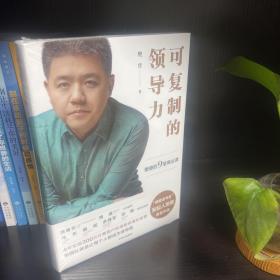
Indoor Sound Environment and Acoustic Perception (中文名:室内声环境与声感知)
正版新书 新华官方库房直发 可开电子发票
¥ 114.24 6.8折 ¥ 168 全新
库存5件
作者孟琪;武悦
出版社知识产权出版社
出版时间2020-09
版次1
装帧精装
货号文轩12.14
上书时间2024-12-16
- 在售商品 暂无
- 平均发货时间 14小时
- 好评率 暂无
- 店主推荐
- 最新上架
商品详情
- 品相描述:全新
图书标准信息
- 作者 孟琪;武悦
- 出版社 知识产权出版社
- 出版时间 2020-09
- 版次 1
- ISBN 9787513072205
- 定价 168.00元
- 装帧 精装
- 开本 16开
- 纸张 胶版纸
- 页数 272页
- 字数 185.000千字
- 【内容简介】
- 本书是作者多年研究成果的精编,根据声环境主要影响的建筑类型,共分5个部分,即商业空间、餐厅、车站、医院、居住空间的声环境与声感知研究,是对室内建筑声环境与声感知研究的新拓展。本书的独到之处在于,不是简单地重复研究室内建筑声环境或噪声水平的高低,而是考虑到不同建筑的使用性质的差别与声环境感知,以及声品质与健康、行为之间的关系,如商业建筑声环境对顾客的满意度影响、餐饮空间声环境对就餐人行为的影响、交通建筑声环境对语言清晰度的影响、医疗建筑中声环境对病患心理生理的影响、居住建筑中声环境对居民睡眠的影响等内容,涉及建筑学、声学、环境科学、心理学、社会学、管理学等交叉学科研究,并系统地总结了声感知对不同人群的影响范围和改善方法,具有较高的社会、科学与工程价值。
- 【作者简介】
-
Qi Meng is a professor of Harbin Institute of Technology (HIT), China, heading the Building Acoustics Group in School of Architecture of HIT. He has worked in environmental and architectural acoustics areas for 15 years, and conducted more than 10 research projects supported by National Natural Science Foundation of China (NSFC), Natural Science Foundation of Heilongjiang Province and National Key Laboratories of China. He has more than 70 research papers published, most of which are indexed by SCI, SSCI and EI. His work on acoustic theories, design guidance and products has brought major improvements to the noise control in indoor spaces and soundscape design in urban areas.
Yue Wu is an associate professor of Harbin Institute of Technology (HIT), China, supervising students of doctoral programs. She did the postdoctoral program in civil engineering in HIT and was a visiting scholar of University of Sheffield, UK. Her research interests include architectural acoustics and healthy building. She has led a number of national, provincial and ministerial projects, and participated in compiling the acoustic and hospital direction standards. She has more than 20 journal articles published, among which 10 journal papers are indexed by SCI, SSCI, AHCI and CSSCI. - 【目录】
-
Chapter1. Sound Environment and Acoustic perception in commercial spaces
1.1 Effects of Individual Sound Sources on the Subjective Loudness and Acoustic Comfort in Underground Shopping Streets
1.2 Influence of social and behavioural characteristics of users on their evaluation of subjective loudness and acoustic comfort in shopping malls
1.3 Prediction of subjective loudness in underground shopping streets using artificial neural network
Chapter2. Sound Environment and Acoustic perception in dinning spaces
2.1 Effects of typical dining styles on conversation behaviours and acoustic perception in restaurants
2.2 Effect of children on the sound environment in fast-food restaurants
Chapter3. Sound Environment and Acoustic perception in railway stations
3.1 Acoustic comfort in large railway stations
3.2 The complexity of sound environment contributing to acoustic comfort in urban intermodal transit spaces
Chapter4. Sound Environment and Acoustic perception in hospitals
4.1 Interaction between Sound and Thermal Influences on Patient Comfort in the Hospitals of China’s Northern Heating Region
4.2 Influence of the acoustic environment in hospital wards on patient physiological and psychological indices
Chapter5. Sound Environment and Acoustic perception in living spaces
5.1 Effects of sound environment on the sleep of college students
5.2 Effects of traffic noise on the sleep of older adults
相关推荐
-

Indoor
九五品广州
¥ 360.00
-

Indoor Sound Environment and Acoustic Perception (中文名:室内声环境与声感知)
全新天津
¥ 124.20
-

Indoor Sound Environment and Acoustic Perception (中文名:室内声环境与声感知)
全新长沙
¥ 74.94
-

Indoor Sound Environment and Acoustic Perception (中文名:室内声环境与声感知)
全新成都
¥ 121.27
-

Indoor Sound Environment and Acoustic Perception (中文名:室内声环境与声感知)
全新南昌
¥ 119.77
-

Indoor Sound Environment and Acoustic Perception (中文名:室内声环境与声感知)
全新武汉
¥ 259.30
-

Indoor Sound Environment and Acoustic Perception (中文名:室内声环境与声感知)
九五品上海
¥ 75.00
-

Indoor Sound Environment and Acoustic Perception (中文名:室内声环境与声感知)
九五品北京
¥ 70.00
-

Indoor Sound Environment and Acoustic Perception (中文名:室内声环境与声感知)
全新哈尔滨
¥ 70.00
-

Indoor Plants
九品北京
¥ 10.00
— 没有更多了 —
















以下为对购买帮助不大的评价